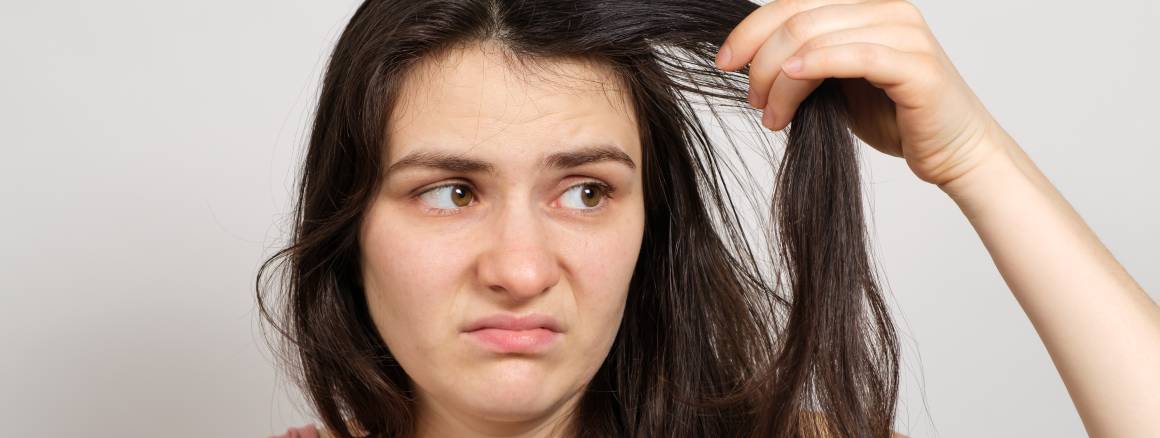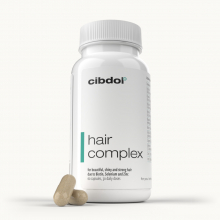8 signs of damaged hair: how to know if your hair is damaged
Published:
Is your hair looking dull, dry, and lifeless? Do you notice more strands falling out when you brush or wash your hair? Have you noticed more split ends or breakage recently? If you answered yes to any of these questions, your hair may be damaged and unhealthy. Read on to learn the 8 most common signs of damaged hair and what you can do to restore your hair's health.
Contents:
- What are the Causes of Damaged Hair?
- How to Tell if Your Hair is Damaged - 8 Signs to Watch For
- Caring for Damaged Hair - Tips to Repair Hair Health
- In Summary: How to Know if Your Hair is Damaged
- What are the signs of damaged hair?
- How can I tell if my hair is damaged?
- What causes hair damage?
- How can I prevent hair damage?
- Can coloring my hair cause damage?
- What is the difference between healthy hair and damaged hair?
- How can I keep my hair healthy?
- What are the common causes of hair thinning?
- How can I repair damaged hair?
- What should I avoid to prevent hair damage?

What are the Causes of Damaged Hair?
Before we dive into the signs of damaged hair, it's helpful to understand what can cause hair damage in the first place. Some of the most common causes of hair damage include:
- Heat styling - Using hot tools like blow dryers, flat irons, and curling irons too frequently can dry out the hair cuticle and cause damage over time.
- Chemical processing - Bleaching, coloring, perming, or straightening the hair with harsh chemicals weakens the hair shaft leading to breakage.
- Improper hair care - Not using the right shampoos and conditioners for your hair type or washing too infrequently can leave hair unhealthy.
- Environmental factors - Exposure to sun, saltwater, chlorine and pollution can all degrade the health of your hair.
- Physical stress - Constant friction from tight hairstyles puts stress on hair follicles and causes trauma to the hair shaft.
- Nutritional deficiencies - Not getting enough protein, vitamins and minerals in your diet can eventually impact the health of your hair.
Being aware of these common causes of damage can help you avoid behaviors that lead to unhealthy hair in the future. Now let's look at how to spot the signs of existing damage.
How to Tell if Your Hair is Damaged - 8 Signs to Watch For
1. Increased Split Ends and Breakage
One of the most obvious signs of damaged hair is split ends. This happens when the protective outermost layer of the hair cuticle breaks open, causing the hair shaft to split and fray. As damage progresses further up the hair shaft, it leads to breakage and more split ends.
Run your fingers through your hair and examine the ends closely. Do you see a lot of splits and broken hairs? If so, your hair is damaged and needs some TLC. Get a trim to snip off split ends and use repairing hair masks to restore your hair's cuticle.
2. Increased Shedding and Thinning
On average, we lose 50-100 strands of hair per day as part of the normal hair growth cycle. However, if you notice a dramatic increase in the amount of hair accumulating in your brush or coming out during washes, it could indicate your hair is damaged.
Excessive hair shedding is a sign that damage is weakening your hair follicles causing hair to fall out before reaching the end of its growth phase. Hair also appears thinner with breakage occurring along the length of hair strands.
3. Frizzy, Dry Hair Texture
Healthy hair has a protective outer layer called the cuticle that lies flat and smooth around the hair shaft. When hair is damaged, the cuticle lifts and becomes rough, causing a frizzy texture. Environmental factors like sun, heat styling, and dry air cause the hair cuticle to degrade faster.
If your smooth, shiny locks have turned frizzy and unmanageable, it's a red flag your hair cuticle is damaged. Hair may also feel dry, coarse and straw-like. Regular deep conditioning and masks can help repair and hydrate the hair cuticle.
4. Lackluster, Dull Hair
Over time, damage strips hair of its natural oils leading to a dull, lackluster appearance. Pigment loss occurs as the hair cuticle cracks from damage, making hair look dehydrated and faded.
If your vibrant, glossy hair has become dull, lifeless and lacking shine, it needs some TLC. Using moisturizing and repairing hair products can help restore shine and strength to damaged hair.
5. Change in Hair Elasticity
Healthy hair has elasticity meaning it can stretch and return back to its original form without breaking. When hair is damaged, the disulfide bonds in the hair shaft weaken causing loss of elasticity.
Check the elasticity of your hair by taking one strand between your fingers and gently stretching it. Healthy hair should stretch up to 50% of its length and bounce back without breaking. If your hair snaps and breaks with minimal stretching, or stretches but doesn't retract, elasticity is compromised indicating damage.
6. Increased Porosity
Hair porosity refers to the hair cuticle's ability to trap and retain moisture. Healthy hair has low porosity as the cuticle's protective barrier keeps moisture locked inside the hair shaft.
When the cuticle is damaged it leads to high porosity - gaps and holes allow moisture to pass in and out leading to dry, brittle hair. Signs your hair may have high porosity include: long drying time, lack of curl definition, dry feeling even when wet, and frizz.
7. Unmanageability
Damaged, porous hair becomes increasingly difficult to style and control. Broken disulfide bonds make hair unruly and impossible to comb or style. Heat styling and brushing causes more breakage as hair is too weak to withstand tension and friction.
Does your hair seem impossible to detangle or style without adding loads of product? Do curls fall flat lacking definition? Damage may be the culprit behind unmanageable hair texture and difficulties styling your hair.
8. Changes in Hair Color, Texture and Growth Patterns
Extensive damage can alter the appearance and growth patterns of your hair. You may notice odd changes like:
- Sudden onset of greying hairs due to loss of melanin
- New texture such as straight hair becoming wavy
- Sprouting of baby fine hairs along the hairline and part
These changes indicate damage is severely impacting the hair follicle. It's best to see a dermatologist to identify and address the root causes, which may include autoimmune disorders, stress, or nutritional deficiencies.
Caring for Damaged Hair - Tips to Repair Hair Health
If you're noticing multiple signs your hair is damaged, don't panic. Hair is remarkably resilient and with proper care you can nurse your locks back to health. Here are some tips:
Use Damage-Fighting Shampoos and Conditioners
Choose formulas with proteins like keratin and wheat protein to strengthen hair. Look for hydrating oils like argan, coconut and avocado to replenish moisture. Products with dimethicone can also help seal gaps in the cuticle to prevent moisture loss.
Limit Heat Styling
Set down the blowdryer and give hair a break from hot tools to prevent further damage. Let hair air dry when possible or use cooler settings.
Trim Regularly
Get a minor trim every 6-8 weeks to snip away split ends before they travel further up the hair shaft. This helps prevent breakage and maintains healthy hair ends.
Deep Condition Weekly
Treat hair to a weekly deep conditioning mask to inject intense hydration and nourishing ingredients like oils, butters and proteins.
Protect Hair from Environmental Elements
Wear hats in the sun, cover hair in saltwater or chlorine, and use an anti-pollution spray when in urban environments. This shields hair from factors that degrade the hair cuticle.
Gently Detangle
Use a wide-tooth comb and work in sections from the bottom up to minimize breakage of fragile strands. Only detangle hair when wet and conditioned to avoid ripping and pulling.
Get Regular Trims
See your stylist every 8-12 weeks not only for a trim, but also for assessments on the health of your hair. An expert may recommend treatments or changes to your hair care routine to improve its condition.
In Summary: How to Know if Your Hair is Damaged
Here are the 8 telltale signs that indicate your hair is damaged:
- Increased split ends and breakage
- Excessive hair loss and shedding
- Dry, frizzy hair texture
- Dull, lackluster appearance
- Lack of elasticity
- High porosity
- Unmanageability and difficulties styling
- Sudden changes in hair color, texture, or growth patterns
While damaged hair can happen to anyone, the underlying causes typically involve heat styling, chemical processing, improper hair care, or environmental factors. With a targeted hair care regimen, reducing damage, and treating hair gently, you can restore strength, shine, and manageability to your locks. Pay attention to signs of damage and take prompt steps to improve the health of your hair.
What are the signs of damaged hair?
The signs of damaged hair can include hair breakage, split ends, hair shedding, dull hair, and hair thinning.
How can I tell if my hair is damaged?
You can tell if your hair is damaged by looking for signs such as frizziness, dryness, brittleness, and a lack of shine.
What causes hair damage?
Hair damage can be caused by various factors, including excessive heat styling, overexposure to the sun, chemical treatments, and poor hair care practices.
How can I prevent hair damage?
To prevent hair damage, it is important to avoid using excessive heat on your hair, protect it from the sun, use gentle hair care products, and avoid harsh chemical treatments.
Can coloring my hair cause damage?
Yes, color treatments can cause damage to the hair if not done correctly or if the hair is not properly cared for afterwards.
What is the difference between healthy hair and damaged hair?
Healthy hair is typically shiny, smooth, and soft to the touch, while damaged hair may appear dull, dry, and brittle.
How can I keep my hair healthy?
You can keep your hair healthy by following a good hair care routine, including regular washing and conditioning, minimizing heat styling and chemical treatments, and protecting your hair from environmental damage.
What are the common causes of hair thinning?
Hair thinning can be caused by various factors, including genetics, hormonal imbalances, nutritional deficiencies, and certain medical conditions.
How can I repair damaged hair?
You can repair damaged hair by using hair repair products, deep conditioning treatments, and avoiding further damage by minimizing heat styling and chemical treatments.
What should I avoid to prevent hair damage?
To prevent hair damage, you should avoid using excessive heat, overbrushing or combing wet hair, wearing tight hairstyles, and exposing your hair to harsh environmental conditions.










